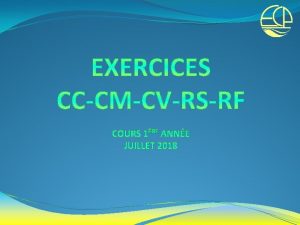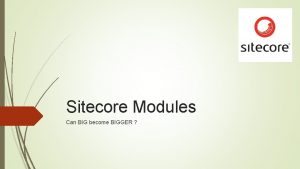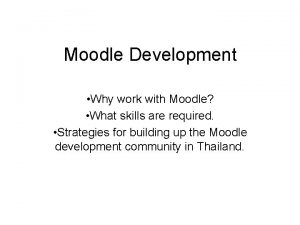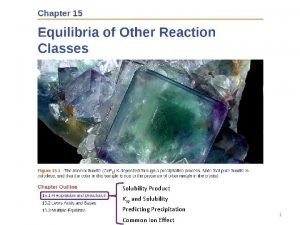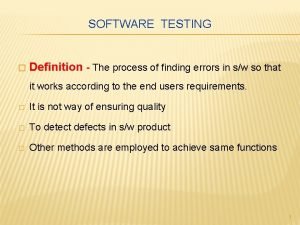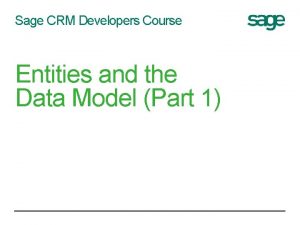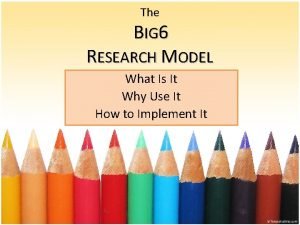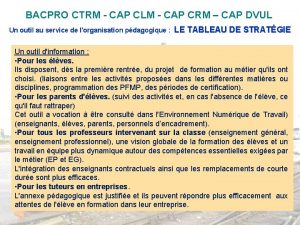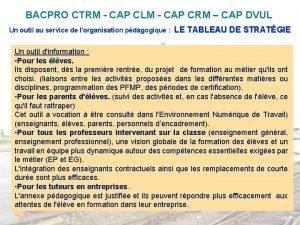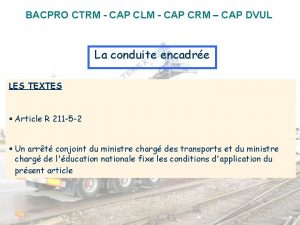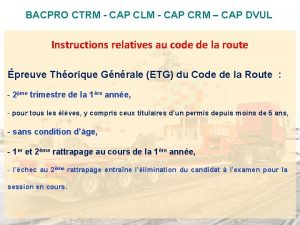Evidence Exchange CAP Developer Training Copyright 2012 American































































- Slides: 63

Evidence Exchange CAP Developer Training Copyright © 2012 American Occupational Therapy Association, Inc. All rights reserved. For personal or educational use only. All other uses require permission from AOTA.

Contents of Evidence Exchange CAP Developer Training • What is the Evidence Exchange? • Introduction to Evidence-Based Practice – Critical Appraisal • Review of Critically Appraised Paper (CAP) Worksheet and Guidelines Copyright © 2012 American Occupational Therapy Association, Inc. All rights reserved. For personal or educational use only. All other uses require permission from AOTA.

What is the Evidence Exchange? Copyright © 2012 American Occupational Therapy Association, Inc. All rights reserved. For personal or educational use only. All other uses require permission from AOTA.

What is the Evidence Exchange? • Central repository for Critically Appraised Papers (CAPs), at-a-glance summaries of the findings and methods of selected individual articles • Occupational therapy practitioners have access to quality evidence-based reviews developed by faculty, students, clinicians, and researchers • Quality control through team of trained reviewers Copyright © 2012 American Occupational Therapy Association, Inc. All rights reserved. For personal or educational use only. All other uses require permission from AOTA.

Introduction to Evidence-Based Practice Copyright © 2012 American Occupational Therapy Association, Inc. All rights reserved. For personal or educational use only. All other uses require permission from AOTA.

How do you know that what you do and how you do it really works? Holm, 2000 Copyright © 2012 American Occupational Therapy Association, Inc. All rights reserved. For personal or educational use only. All other uses require permission from AOTA.

What Is Evidence-Based Practice? “…the conscientious, explicit, and judicious use of current best evidence in making decisions about the care of individual patients. ” “The practice of evidence-based medicine means integrating individual clinical expertise with the best available external clinical evidence from systematic research. ” Sackett, et al. , 1996, p. 71 Copyright © 2012 American Occupational Therapy Association, Inc. All rights reserved. For personal or educational use only. All other uses require permission from AOTA.

EBP Perspective EBP combines information from 3 sources: – Clinical expertise and reasoning – Client preferences – The scientific literature Copyright © 2012 American Occupational Therapy Association, Inc. All rights reserved. For personal or educational use only. All other uses require permission from AOTA.

Occupational Therapy and EBP • We have a history of using evidence to guide our practice • • • Oral tradition Our own beliefs and values Client preferences Assessment data Data from industry regulators; benchmarking companies • Expert opinion • Research evidence Copyright © 2012 American Occupational Therapy Association, Inc. All rights reserved. For personal or educational use only. All other uses require permission from AOTA.

Introduction to Evidence-Based Practice Critical Appraisal Copyright © 2012 American Occupational Therapy Association, Inc. All rights reserved. For personal or educational use only. All other uses require permission from AOTA.

What is Critical Appraisal? • The critical appraisal process helps determine: – Strength of the evidence • Level of evidence – Quality of evidence • Strengths and limitations • Potential biases Mac. Dermid & Law, 2014 Copyright © 2012 American Occupational Therapy Association, Inc. All rights reserved. For personal or educational use only. All other uses require permission from AOTA.

Critical Appraisal – Overview • Whom is the study about? • Population - characteristics – Inclusion – Exclusion – How were participants recruited? • What was the intervention? – Is there a description of the intervention? – Do you know how long it took place? – If there was a comparison group, was that intervention described? Copyright © 2012 American Occupational Therapy Association, Inc. All rights reserved. For personal or educational use only. All other uses require permission from AOTA.

Critical Appraisal - Overview • • • How was the outcome measured? Is it appropriate for the question? Is it reliable? Is it valid? Was assessment blind? Copyright © 2012 American Occupational Therapy Association, Inc. All rights reserved. For personal or educational use only. All other uses require permission from AOTA.

Critical Appraisal - Overview • Was the study large enough and of adequate duration to make the results credible? – Sample size – Follow-up • Length • Completeness-evaluating dropouts Copyright © 2012 American Occupational Therapy Association, Inc. All rights reserved. For personal or educational use only. All other uses require permission from AOTA.

Critical Appraisal - Overview • • Was the statistical analysis appropriate? Were the conclusions justified? Was there a conflict of interest? What is the level of evidence and type of study design? Copyright © 2012 American Occupational Therapy Association, Inc. All rights reserved. For personal or educational use only. All other uses require permission from AOTA.

Levels of Evidence • Level I - Systematic reviews, metaanalyses, randomized controlled trials • Level II - Two groups, nonrandomized studies (e. g. , cohort, case-control) • Level III - One group, nonrandomized (e. g. , before and after, pretest and posttest) Copyright © 2012 American Occupational Therapy Association, Inc. All rights reserved. For personal or educational use only. All other uses require permission from AOTA.

Levels of Evidence • Level IV - Descriptive studies that include analysis of outcomes (single subject design, case series) • Level V - case reports and expert opinion that include narrative literature reviews and consensus statements Note: Qualitative studies are reviewed separately Adapted from Sackett, et al, 1996 Copyright © 2012 American Occupational Therapy Association, Inc. All rights reserved. For personal or educational use only. All other uses require permission from AOTA.

Hierarchy of Evidence Studies at the higher levels of evidence are: – Least vulnerable to bias – More generalizable – Outcomes are more likely to be attributed to the intervention being studied Copyright © 2012 American Occupational Therapy Association, Inc. All rights reserved. For personal or educational use only. All other uses require permission from AOTA.

Critically Appraised Paper (CAP) Worksheet and Guidelines Copyright © 2012 American Occupational Therapy Association, Inc. All rights reserved. For personal or educational use only. All other uses require permission from AOTA.

Critically Appraised Paper (CAP) Purpose • At-a-glance summaries of the methods and findings from selected individual articles • Detailed critical appraisal of individual research study Copyright © 2012 American Occupational Therapy Association, Inc. All rights reserved. For personal or educational use only. All other uses require permission from AOTA.

Critically Appraised Paper (CAP) Purpose Informs practitioners, students, faculty, and researchers through providing: – Strength of the evidence – Relevance to occupational therapy - the article provides clinically relevant research and informs practice and education – Quality of the article including study limitations Copyright © 2012 American Occupational Therapy Association, Inc. All rights reserved. For personal or educational use only. All other uses require permission from AOTA.

Overview of CAP Submissions Copyright © 2012 American Occupational Therapy Association, Inc. All rights reserved. For personal or educational use only. All other uses require permission from AOTA.

The following criteria must be considered prior to selecting an article: • The article is an original quantitative research/study that describes an intervention within the scope of occupational therapy practice. • The article was published in a peer-reviewed journal within 10 years of date of submission. Copyright © 2012 American Occupational Therapy Association, Inc. All rights reserved. For personal or educational use only. All other uses require permission from AOTA.

The following criteria must be considered prior to selecting an article: • The article is Level I (limited to randomized controlled trials), II, or III evidence. Only intervention studies will be considered. CAPs submitted on systematic reviews, assessment tools and measures, meta-analyses, descriptive studies, single-subject design, case reports, or expert opinions will not be accepted into the Evidence Exchange. • The CAP cannot duplicate an article currently included in the Evidence Exchange. Additionally, more than one student from the same academic program cannot submit a CAP on the same article. To confirm that a CAP has not been previously published on your article of interest, check the Accepted CAPs list. Copyright © 2012 American Occupational Therapy Association, Inc. All rights reserved. For personal or educational use only. All other uses require permission from AOTA.

In addition, the following criteria must be met: • The CAP must be formatted on the most up-to-date CAP Worksheet posted on the OASIS Submission Site. CAPs submitted using an older version of the CAP Worksheet will be rejected by the Evidence Exchange. • The CAP Worksheet must be submitted as a clean copy Microsoft Word document. Track changes and comments must be removed before submission. • All sources must be appropriately paraphrased and cited. If plagiarism is identified, the CAP will be rejected by the Evidence Exchange. Copyright © 2012 American Occupational Therapy Association, Inc. All rights reserved. For personal or educational use only. All other uses require permission from AOTA.

In addition, the following criteria must be met: • Direct quotes should be kept to a minimum. And if direct quotations are used, proper APA citations must be followed. • All sections of the CAP Worksheet must be filled out. Headings must accurately reflect the content. • If information requested is not reported or not applicable to the article, please indicate so in your response and provide a rationale as needed. • All acronyms must be spelled out when used for the first time. • CAP Worksheet must be previewed for errors in syntax and spelling. Copyright © 2012 American Occupational Therapy Association, Inc. All rights reserved. For personal or educational use only. All other uses require permission from AOTA.

In addition, the following criteria must be met: • The DOI number for the original article must be provided in the Citation section. All submission must include an electronic version of the original article. • Any additional articles referred to (cited) in the CAP need to be included on the Reference list (include DOI number), using APA format (6 th edition. Copyright © 2012 American Occupational Therapy Association, Inc. All rights reserved. For personal or educational use only. All other uses require permission from AOTA.

In addition, the following criteria must be met: • If you are a student submitting a CAP, a faculty advisor must provide support throughout the CAP development process, including reviewing all CAPs prior to submission. Only high quality CAPs that have been completed with support of a faculty advisor should be submitted to the Evidence Exchange. • CAPs that are conditionally accepted will be returned to submitters with the expectations that revisions will be addressed and returned based on reviewer feedback. CAPs that have not been revised and resubmitted will not be accepted for inclusion in the Evidence Exchange. Copyright © 2012 American Occupational Therapy Association, Inc. All rights reserved. For personal or educational use only. All other uses require permission from AOTA.

Components of a CAP Please access the CAP Worksheet and CAP Guidelines Copyright © 2012 American Occupational Therapy Association, Inc. All rights reserved. For personal or educational use only. All other uses require permission from AOTA.

Copyright © 2012 American Occupational Therapy Association, Inc. All rights reserved. For personal or educational use only. All other uses require permission from AOTA.

Components of a CAP • Using APA format (6 th edition), include full title, all authors (last name, initials), full journal title, year, volume #, and page #s. • Include the DOI number (Digital Object Identifier). Numbers are often listed at the end of a reference in a reference list. • An example citation: Simmons, C. D. , Griswold, L. A. , & Berg, B. (2010). Evaluation of social interaction in occupational engagement. American Journal of Occupational Therapy, 64(1), 10– 17. http: //dx. doi. org/10. 5014/ajot. 64. 1. 10 Copyright © 2012 American Occupational Therapy Association, Inc. All rights reserved. For personal or educational use only. All other uses require permission from AOTA.

Copyright © 2012 American Occupational Therapy Association, Inc. All rights reserved. For personal or educational use only. All other uses require permission from AOTA.

Components of CAP – Clinical Bottom Line � This section should include a brief description of the intervention and discussion of how the evidence can be used to inform and guide occupational therapy practice (i. e. , within the scope of traditional or emerging practice) AND how practitioners can use the evidence relative to the target population and practice setting. � Are the recommendations stated in practical terms – i. e. , are they ready to implement? Stating that the evidence has an “impact” or “effect” on practice is insufficient. Telling the reader how the evidence can be used is valuable. Copyright © 2012 American Occupational Therapy Association, Inc. All rights reserved. For personal or educational use only. All other uses require permission from AOTA.

Components of CAP – Clinical Bottom Line � Do the limitations of the study affect the strength of the evidence? (i. e. , type of study design, level of evidence, identified study limitations, internal validity rating, to what population results may generalize)? Include implications identified by the author and any additional implications that you judge to be appropriate to clinical practice, program development, education and training, and research. � Are the findings generalizable? Please keep in mind that you are reviewing only one article and that the implications should reflect only this single study. Copyright © 2012 American Occupational Therapy Association, Inc. All rights reserved. For personal or educational use only. All other uses require permission from AOTA.

Copyright © 2012 American Occupational Therapy Association, Inc. All rights reserved. For personal or educational use only. All other uses require permission from AOTA.

Components of CAP – Research Objectives • A list of the objective(s) of the study. The objectives are usually stated briefly in the abstract of the article, and again in more detail in the introduction. They may be phrased as a statement “To evaluate or test the effectiveness of…. ”. • This should be phrased in the submitters’ own words and should be no more than a brief sentence or two. Copyright © 2012 American Occupational Therapy Association, Inc. All rights reserved. For personal or educational use only. All other uses require permission from AOTA.

Copyright © 2012 American Occupational Therapy Association, Inc. All rights reserved. For personal or educational use only. All other uses require permission from AOTA.

Components of CAP – Design Type and Level of Evidence • Determining design and level of evidence may not be clear cut or initially obvious to the reader • Terminology used for study design may differ by discipline – e. g. , psychology, rehabilitation medicine • Use the description of the study procedure to guide the decision on design and level of evidence Copyright © 2012 American Occupational Therapy Association, Inc. All rights reserved. For personal or educational use only. All other uses require permission from AOTA.

Components of CAP – Design Type and Level of Evidence • The article must be Level I (limited to randomized controlled trials), II, or III evidence. • Only intervention studies will be considered. • CAPs submitted on systematic reviews, assessment tools and measures, meta-analyses, descriptive studies, singlesubject design, case reports, or expert opinions will not be accepted into the Evidence Exchange. Copyright © 2012 American Occupational Therapy Association, Inc. All rights reserved. For personal or educational use only. All other uses require permission from AOTA.

Components of CAP – Design Type and Level of Evidence (adapted from Sackett, D. L. , Rosenberg, W. M. , Muir Gray, J. A. , Haynes, R. B. & Richardson, W. S. (1996). Evidence-based medicine: What it is and what it isn’t. British Medical Journal, 312, 71 -72). • Level I: Systematic reviews, meta-analyses, randomized controlled trials • Level II: Two groups, nonrandomized studies (e. g. , cohort, case-control) • Level III: One group, nonrandomized (e. g. , before-and-after, pretest and posttest) • Level IV: Descriptive studies that include analysis of outcomes (single subject design, case series) • Level V: Case reports and expert opinion that include narrative literature reviews and consensus statements Copyright © 2012 American Occupational Therapy Association, Inc. All rights reserved. For personal or educational use only. All other uses require permission from AOTA.

Copyright © 2012 American Occupational Therapy Association, Inc. All rights reserved. For personal or educational use only. All other uses require permission from AOTA.

Components of CAP – Participant Selection • How were participants selected to participate? Describe sample selection procedures. • Inclusion criteria: What criteria did the researchers use to select participants (e. g. , diagnosis, severity level, age)? • Exclusion criteria: What criteria did the researchers use to limit the study population (e. g. , severity level, age)? Copyright © 2012 American Occupational Therapy Association, Inc. All rights reserved. For personal or educational use only. All other uses require permission from AOTA.

Copyright © 2012 American Occupational Therapy Association, Inc. All rights reserved. For personal or educational use only. All other uses require permission from AOTA.

Components of CAP – Participant Characteristics • N = number of participants in trial or sample • Information as described in the study should be included: – Number and percentage of males and females (if only number is given in the article, then percentage should be calculated by the CAP writer; if only percentage given, then number should be calculated by the CAP writer). – Ethnicity – Disease/disability diagnosis Copyright © 2012 American Occupational Therapy Association, Inc. All rights reserved. For personal or educational use only. All other uses require permission from AOTA.

Copyright © 2012 American Occupational Therapy Association, Inc. All rights reserved. For personal or educational use only. All other uses require permission from AOTA.

Components of CAP – Intervention(s) and Control Groups This section describes the intervention and comparison groups (if appropriate depending upon study design) – Brief description of the intervention: Provide a brief description of the intervention including the location of the study. It must answer the “what? ” and “how? ” of the intervention. – How many participants in the group? – Where did the intervention take place? Was intervention received at home or in an institution? Was it the same for different groups of subjects if there was more than one intervention group? – Who delivered? Who provided the intervention? Was it different for intervention and control groups? – How often? How often did the intervention take place and what was the length of the individual intervention session (e. g. , twice weekly for 30 minutes per session)? – For how long? How long did the intervention last (e. g. , 3 months) Copyright © 2012 American Occupational Therapy Association, Inc. All rights reserved. For personal or educational use only. All other uses require permission from AOTA.

Copyright © 2012 American Occupational Therapy Association, Inc. All rights reserved. For personal or educational use only. All other uses require permission from AOTA.

Components of CAP – Intervention Biases • Contamination: This occurs when participants of the control group inadvertently received the intervention; thus, the difference in outcomes between the two groups may be reduced. This favors the control group. • Co-intervention: Participants receiving another form of intervention at the same time as the study intervention can influence the results in either direction. For example, taking medication while receiving or not receiving intervention could favor the results for participants in either group. The reader must consider if the other, or additional, intervention could have positively or negatively influenced the results. • Timing of intervention: Consider whether the intervention was provided over a short or extended period of time. For example: – If the intervention was provided over an extended period of time, aging can be considered a timing factor. – In the case of children, maturation alone could be a factor in improvements seen. – If the intervention was very short in duration, there may not have been sufficient time for a noticeable effect in the outcomes of interest. This would favor the control group. Copyright © 2012 American Occupational Therapy Association, Inc. All rights reserved. For personal or educational use only. All other uses require permission from AOTA.

Components of CAP – Intervention Biases • Site of intervention: Where an intervention took place can influence the results. For example, an intervention program carried out in a person’s home may result in a higher level of satisfaction that favors the intervention group. The site of intervention should be consistent among all groups. • Use of different therapists to provide intervention: If different therapists were involved in providing the intervention(s) under study to the different groups of participants, the results could be influenced in one direction. For example, one therapist could be more motivating or positive than another; hence, the group that she worked with could demonstrate more favorable outcomes. Therapist involvement should be equal and consistent among all intervention groups. • Baseline equality: Intervention and control groups should be equal on important participant characteristics (e. g. , age, gender, severity of disability) and outcome measures (dependent variables) at study outset. If not, differences should be dealt with appropriately in data analysis. Copyright © 2012 American Occupational Therapy Association, Inc. All rights reserved. For personal or educational use only. All other uses require permission from AOTA.

Copyright © 2012 American Occupational Therapy Association, Inc. All rights reserved. For personal or educational use only. All other uses require permission from AOTA.

Components of CAP – Measures and Outcomes • Outcomes are the variables or issues of interest to the researcher. They represent the product or results of the intervention or exposure. Many studies include numerous outcome measures. For the purpose of the CAP, only include measures relevant to occupational therapy practice. Complete the following for each measure: • Name of test/measure and what is measured: Example: Mc. Gill Pain Questionnaire (pain intensity and pain perception) • What outcome is measured: Name of the measure and brief description of the outcome measured • Is the measure reliable (as reported in the article)? Reliability refers to whether a measure was giving the same information over different situations. The two most common forms of reliability are (1) test–retest reliability―the same observer gets the same information on two occasions separated by a short time interval, and (2) interrater reliability―different observers get the same information at the same time. Copyright © 2012 American Occupational Therapy Association, Inc. All rights reserved. For personal or educational use only. All other uses require permission from AOTA.

Components of CAP – Measures and Outcomes • Is the measure valid (as reported in the article)? Validity asks whether the measure assesses what it is intended to measure. Consider if the measure includes all of the relevant concepts and elements of the outcome (content validity) and if the authors report that the measure has been tested in relationship to other measures to determine any relationship (criterion validity). For example, a “valid” ADL measure includes all relevant elements of self-care and has been tested with other measures of daily living activities and self-care functioning to determine that the relationship between the measures is as expected. • When is the measure used? It is important to note if outcomes were measured pre- and post-intervention, and whether short-term and/or long -term effects were considered. Copyright © 2012 American Occupational Therapy Association, Inc. All rights reserved. For personal or educational use only. All other uses require permission from AOTA.

Copyright © 2012 American Occupational Therapy Association, Inc. All rights reserved. For personal or educational use only. All other uses require permission from AOTA.

Components of CAP – Measurement Biases When evaluating measurement biases inherent in the study, you can consider reporting on the outcome measures as a group, taking into account each outcome measure. • Were the evaluators blind to treatment status? Evaluators who are aware of which group a participant was allocated to or which intervention a participant received can influence the results by giving the participant, or group of participants, a more or less favorable evaluation. It is usually the intervention group that is favored. This should be considered when the evaluator was part of the research or intervention team. • Was there recall or memory bias? This can be a problem if outcomes were measured using self-report tools, surveys, or interviews that require the participant to recall past events. Often a person recalls fond or positive memories more than negative ones, which can favor the results of the study. Copyright © 2012 American Occupational Therapy Association, Inc. All rights reserved. For personal or educational use only. All other uses require permission from AOTA.

Copyright © 2012 American Occupational Therapy Association, Inc. All rights reserved. For personal or educational use only. All other uses require permission from AOTA.

Components of CAP – Results • List key findings based on study objectives. – Key findings should include change (or lack of change) in outcomes relevant to occupational therapy practice and comparability of groups (as appropriate). – Include statistical significance where appropriate (p >. 05) and effect size if reported. • Was this study adequately powered (large enough to show a difference? ) – While a p-value that is greater than. 05 indicates that there is no statistically significant difference between groups, in some research studies no difference is noted because the sample size is small. In this situation, one surmises that if the groups had been larger, there would be a statistically significant difference. Copyright © 2012 American Occupational Therapy Association, Inc. All rights reserved. For personal or educational use only. All other uses require permission from AOTA.

Components of CAP – Results • Were the analysis methods appropriate? Did the authors justify/explain their choice of analysis methods? Do they appear to be appropriate for the study and the outcomes? You need to consider the following: – The purpose of the study―Is it comparing two or more interventions or examining the correlation between different variables of interest? Different statistical tests are used for comparison and correlation. – The outcomes―If there is only one outcome measured that compares two different interventions, a simple statistical test (e. g. , a t-test) will probably be sufficient. However, with a larger number of outcomes involving different types of variables, more complex statistical methods, such as analysis of variance (ANOVA) or regression analysis, are usually required. Copyright © 2012 American Occupational Therapy Association, Inc. All rights reserved. For personal or educational use only. All other uses require permission from AOTA.

Components of CAP – Results • Were statistics appropriately reported? Refer to narrative in article as well as tables. • Was participant dropout less than 20% in total sample and balanced between groups? If dropout was greater than 20% and there was an unbalance between groups, attrition may be a concern. Consider reasons for attrition if reported by researchers. • What are the overall study limitations? The limitations can be a summary of the limitations discussed in the article and others that the reviewer finds to be important. Study limitations should not only address the strength of evidence but also how the study procedures attempted to control for potential biases. Consider if the study design is appropriate for the level of knowledge on the topic. Copyright © 2012 American Occupational Therapy Association, Inc. All rights reserved. For personal or educational use only. All other uses require permission from AOTA.

Copyright © 2012 American Occupational Therapy Association, Inc. All rights reserved. For personal or educational use only. All other uses require permission from AOTA.

Components of CAP Conclusions • The discussion section of the article should outline clear conclusions from the results. • Conclusions should be relevant and appropriate, given the study methods and results. For example, the investigators of a welldesigned RCT study using sound outcome measures could state that the results are conclusive that intervention A is more effective than intervention B for the study population. • Strong conclusions cannot always be made. For example, studies with methodological limitations or biases (e. g. , lack of a control group, unreliable measures) make it difficult to “prove” or conclude that it was the intervention alone that influenced the outcome(s). In these situations, the authors may only conclude that the results demonstrated a difference in the specific outcomes measured in this study for the clients involved. Copyright © 2012 American Occupational Therapy Association, Inc. All rights reserved. For personal or educational use only. All other uses require permission from AOTA.

Components of CAP Conclusions • The results may not be generalizable to other populations. Therefore, further study or research should be recommended. • Determine if study results address the study objectives (or hypotheses) by means of presenting the study outcomes and corresponding statistical analyses. • Please note that this section is not a duplicate from the clinical bottom line. Information about how the evidence can be used to inform and guide occupational therapy practice should be included in the clinical bottom line section of the CAP. Copyright © 2012 American Occupational Therapy Association, Inc. All rights reserved. For personal or educational use only. All other uses require permission from AOTA.

Next Steps Thank you for reviewing the CAP Developer Training Power. Point. If you have any questions throughout the CAP review process, contact evidence. exchange@gmail. com. Please review the entirety of the CAP Developer Toolkit before beginning your CAP. Copyright © 2012 American Occupational Therapy Association, Inc. All rights reserved. For personal or educational use only. All other uses require permission from AOTA.

References • • Cope, S. , & Mollinger, L. (2009). Concordia University Wisconsin Internal Validity Rating Form. Unpublished document, Department of Occupational Therapy, Concordia University Wisconsin, Mequon, Wisconsin. Holm, M. B. (2000). Our mandate for the millennium: Evidence-based practice (Eleanor Clarke Slagle Lecture). American Journal of Occupational Therapy, 54, 575 -585. http: //dx. doi. org/10. 5014/ajot. 54. 6. 575 Mac. Dermid, J. C. , & Law, M. (2014). Evaluating the evidence. In M. Law, & J. Mac. Dermid (Eds. ), Evidence-based rehabilitation: A guide to practice (3 rd ed. , pp. 129 -156). Thorofare, NJ: Slack. Sackett, D. L. , Rosenberg, W. M. , Muir Gray, J. A. , Haynes, R. B. , & Richardson, W. S. (1996). Evidence-based medicine: What it is and what it isn’t. British Medical Journal, 312, 71– 72 Copyright © 2012 American Occupational Therapy Association, Inc. All rights reserved. For personal or educational use only. All other uses require permission from AOTA.
 Oracle developer tools for visual studio 2017
Oracle developer tools for visual studio 2017 Hvad menes der med et handicapresultat
Hvad menes der med et handicapresultat Cap compas
Cap compas Dentist copyright 2012
Dentist copyright 2012 Copyright 2012
Copyright 2012 Copyright 2012
Copyright 2012 Copyright 2012
Copyright 2012 Microsoft exchange 2010 email archiving
Microsoft exchange 2010 email archiving Determination of exchange rate
Determination of exchange rate Voluntary exchange
Voluntary exchange Gas exchange key events in gas exchange
Gas exchange key events in gas exchange What is a primary source
What is a primary source Primary evidence vs secondary evidence
Primary evidence vs secondary evidence Secondary sources
Secondary sources Primary evidence vs secondary evidence
Primary evidence vs secondary evidence Primary evidence vs secondary evidence
Primary evidence vs secondary evidence Fiber evidence can have probative value
Fiber evidence can have probative value Class evidence vs individual evidence
Class evidence vs individual evidence Explain how class evidence can have probative value.
Explain how class evidence can have probative value. Individual vs class evidence
Individual vs class evidence Define ecological fallacy
Define ecological fallacy American indonesian exchange foundation
American indonesian exchange foundation American insurance training
American insurance training American heart association cpr in schools
American heart association cpr in schools Progress developer
Progress developer Us bank open api
Us bank open api T shaped developer
T shaped developer Sitecore marketplace
Sitecore marketplace Saints row 2 designer
Saints row 2 designer Fase developer adalah
Fase developer adalah Rgp
Rgp Moodle catolica
Moodle catolica Robotics developer studio
Robotics developer studio Microsoft certified application developer
Microsoft certified application developer Oracle developer terdiri dari
Oracle developer terdiri dari Ibm rational business developer
Ibm rational business developer Software engineering vs computer science
Software engineering vs computer science Clean code developer
Clean code developer Nso developer days
Nso developer days Blackboard rest api
Blackboard rest api Net developer roadmap
Net developer roadmap Google forms developers
Google forms developers Qwop bennett foddy
Qwop bennett foddy Tera developer
Tera developer Ksp example
Ksp example Process of finding errors in software code
Process of finding errors in software code Sage crm developer guide
Sage crm developer guide Mysql developer zone
Mysql developer zone Ibm developerworks java
Ibm developerworks java Nybleus
Nybleus Ms teams developer platform
Ms teams developer platform Language integrated query developer
Language integrated query developer Ibm rational developer for system z
Ibm rational developer for system z Microsoft azure support plans
Microsoft azure support plans Developer android sdk download
Developer android sdk download Android developer fundamentals
Android developer fundamentals Qualcomm spaces developer apis unreal unityverge
Qualcomm spaces developer apis unreal unityverge The big 6 research model
The big 6 research model Allscripts developer program
Allscripts developer program Office developer tools for visual studio 2017
Office developer tools for visual studio 2017 Pkp developer
Pkp developer Windows server 2003 developer
Windows server 2003 developer Microsoft robotics developer studio tutorial
Microsoft robotics developer studio tutorial Microsoft robotics studio
Microsoft robotics studio


